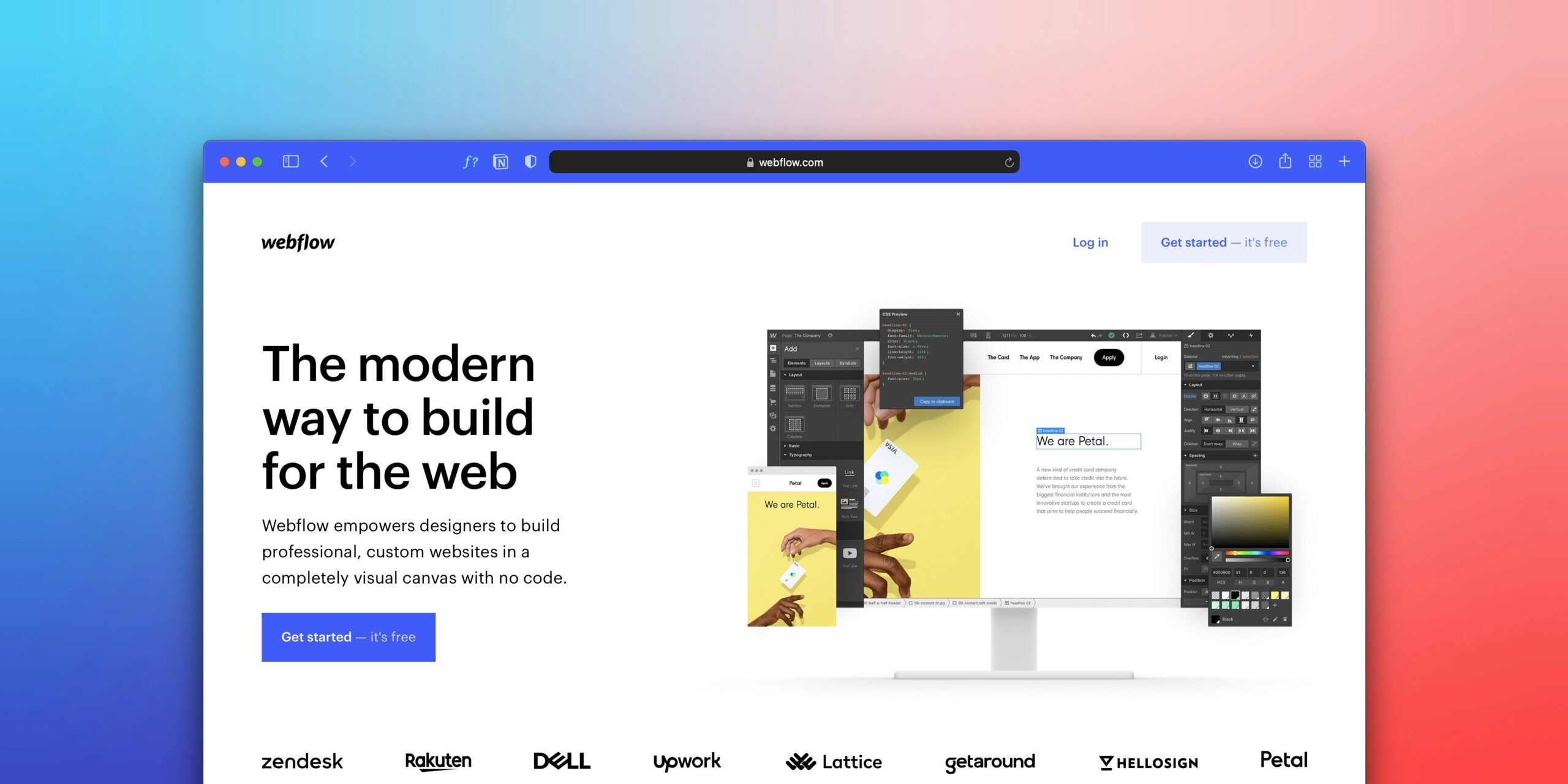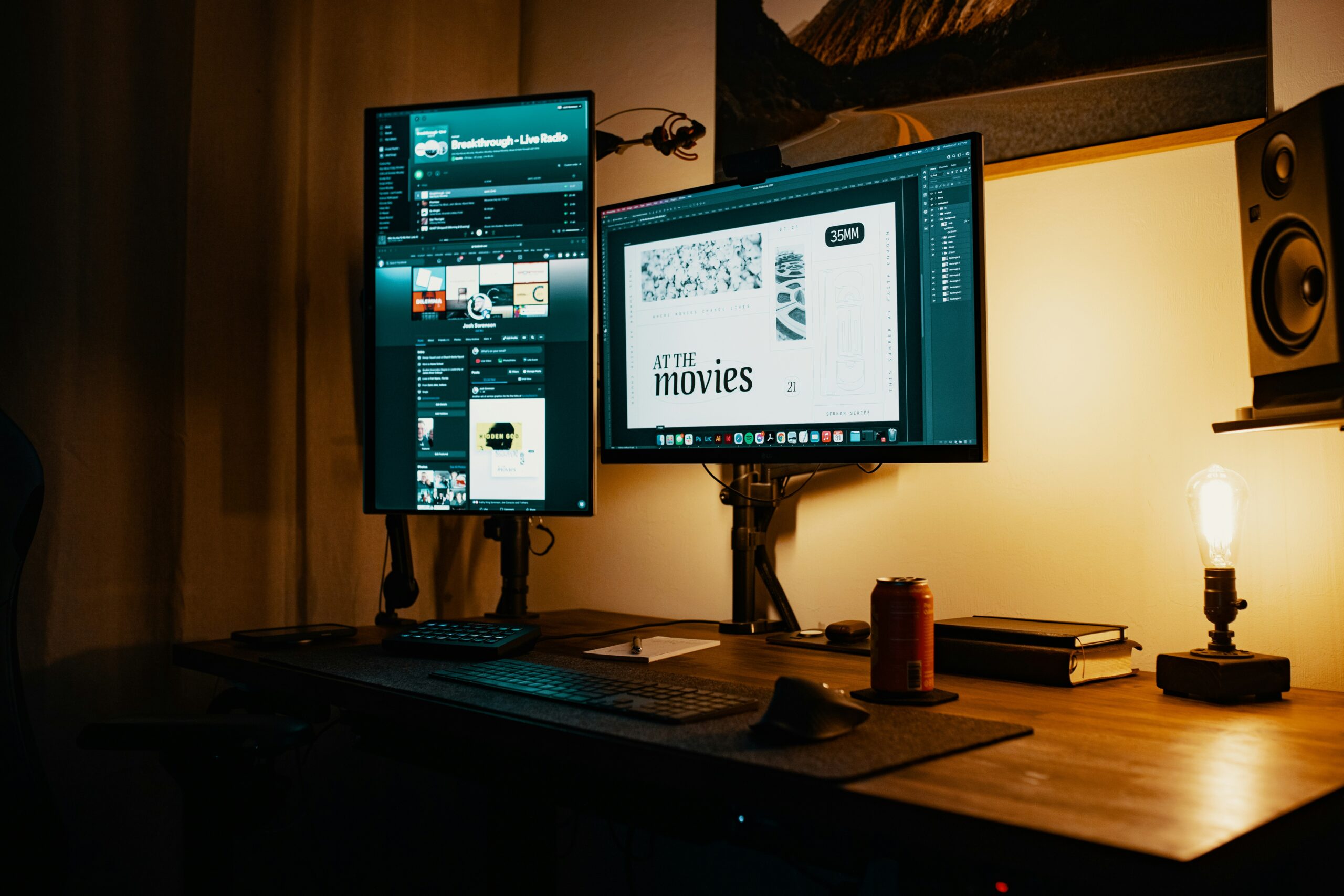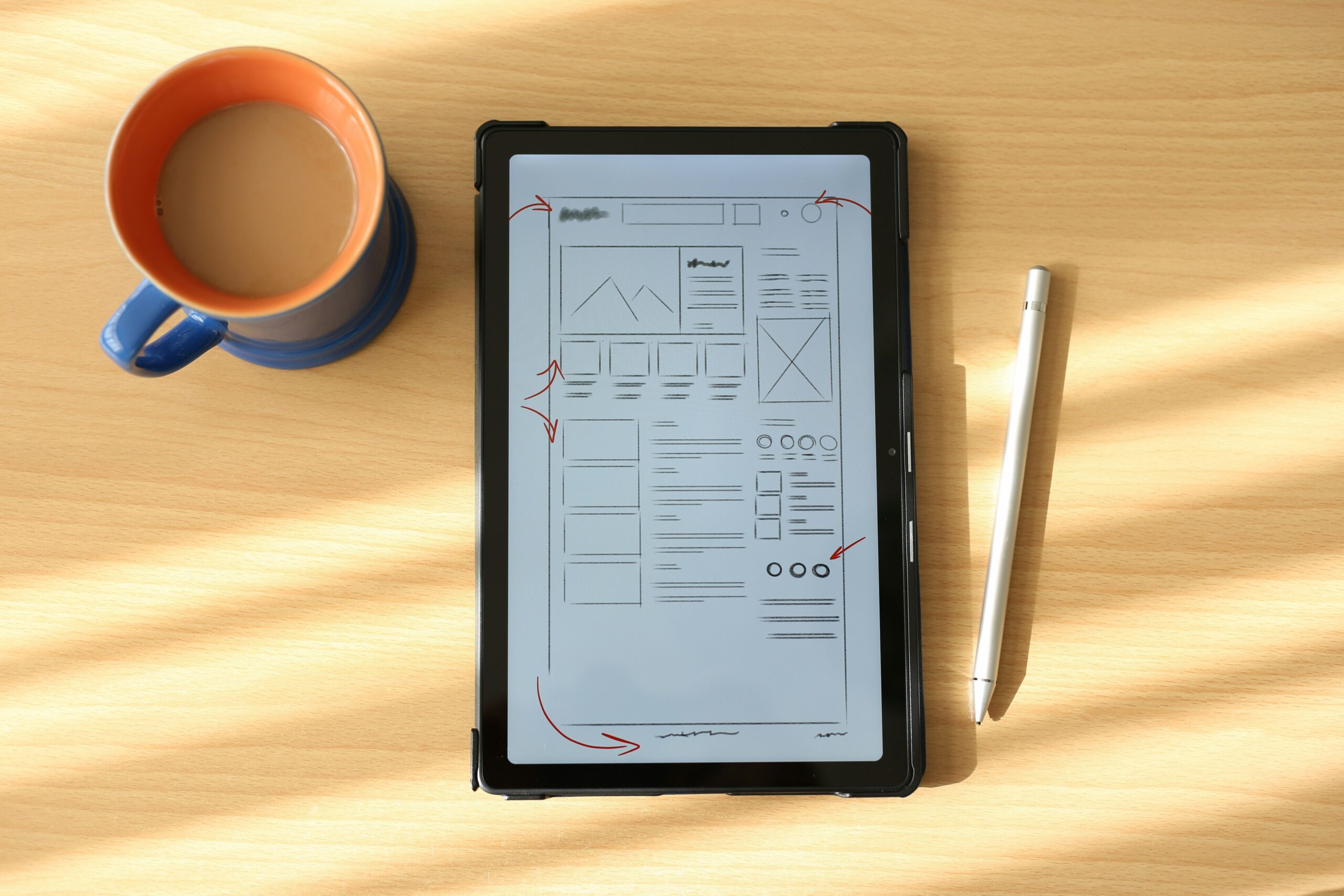Why Hire a Web Designer? Key Benefits, ROI, and How Professionals Boost Your Online Success
Building a website sounds easy with all the DIY tools out there but I’ve learned firsthand that standing out online takes way more than a basic template. When I wanted my business to make a real impression I realized a professional touch wasn’t just helpful—it was essential.
A skilled web designer doesn’t just make things look good. They know how to blend creativity with strategy so your site works smoothly and keeps visitors coming back. If you want your brand to shine and your website to deliver results hiring a web designer might be the smartest move you make.
The Value of Professional Web Design

Professional web design enhances user perception and brand reputation. My experience taught me every detail, from layout choices to color schemes, influences how visitors interact with a site. A web designer aligns design with business goals, driving engagement and conversions efficiently. Design impacts website performance. I’ve seen slow-loading, poorly structured sites lose up to 53% of visitors after three seconds, according to Google (2018). Designers apply optimization techniques to minimize load times, ensuring visitors stay. Accessibility principles are also implemented, making content available to users with varying abilities. Conversion-focused design strategies increase ROI. Calls-to-action (CTAs), intuitive navigation, and compelling visuals encourage user interaction. For example, clear CTAs like “Sign Up Now” or “Get Started” guide visitors to desired actions, boosting conversion rates.
Explore the advantages of hiring a professional web designer using the table below:
| Aspect | DIY Tools | Professional Web Designer |
|---|---|---|
| Visual Uniqueness | Template-based, limited customization | Custom, brand-specific designs |
| Search Engine Optimization | Basic, often generic SEO | Advanced, targeted SEO integration |
| Conversion Optimization | Few options, generic templates | Strategic CTAs, analytics integration |
| Responsiveness | Variable quality, sometimes limited | Tested across devices and browsers |
| Scalability | Fixed templates, limited flexibility | Scalable, adaptable architecture |
| Ongoing Support | Minimal or self-managed | Dedicated support, proactive updates |
Professional web design directly supports online business objectives. Strategic improvements, like A/B testing and mobile responsiveness, translate to measurable gains. I’ve observed brands achieve increased retention and better search rankings after redesigns, highlighting the value of expert involvement.
Key Benefits of Hiring a Web Designer
Hiring a web designer creates competitive advantages beyond visual appeal. My experience shows that professional support influences website function, branding, and long-term growth.
Unique and Custom Website Solutions
Professional web designers deliver unique and custom website solutions tailored to each business. I work with designers to create layouts and features that match brand style and audience demands, avoiding generic templates. Designers provide branding-focused visuals, custom graphics, and personalized user flows, which help businesses in crowded markets, such as boutiques, tech startups, and law firms.
| DIY Tools | Professional Web Designer |
|---|---|
| Generic layouts | Custom layouts and features |
| Limited branding | Unique visuals and tailored branding |
| Restrictive code | Flexible development and integrations |
Enhanced User Experience and Accessibility
Web designers enhance user experience and website accessibility by adopting proven UI/UX principles. I see increased retention when a designer organizes site architecture, buttons, and forms for quick interactions. Designers use accessibility standards (WCAG 2.1), ensuring that individuals with disabilities can access content, which is vital for compliance and reputation.
Responsive and Mobile-Friendly Design
Every designer I hire implements responsive and mobile-friendly design for fast user access across smartphones, tablets, and desktops. Google’s data confirms that shoppers using mobile devices comprise over 60% of total website traffic (Statista, 2023). Designers test and refine layouts and media to adapt to all resolutions, so visitors experience consistent performance everywhere.
| Device Type | Importance for Casino Sites |
|---|---|
| Desktop | Large-scale visuals and detailed games |
| Tablet | Touch controls and quick navigation |
| Mobile | One-handed use and fast loading times |
Improved Website Performance and SEO
Web designers improve website performance and SEO by optimizing code, compressing images, and using effective on-page strategies. My sites show faster loading times, which lowers bounce rates and supports higher search rankings. Designers implement meta tags, alt text, and structured data, advancing discoverability and credibility in search engines like Google.
Comparing DIY vs. Professional Web Design

Web design choices affect branding impact, visitor trust, and performance. I compare common issues, cost implications, and professional benefits for clarity.
Common Pitfalls of DIY Solutions
DIY web design platforms cause several issues that limit growth and reputation.
- Limited Customization: Templates from platforms such as Wix, Squarespace, and Weebly restrict brand uniqueness, causing sites to look similar.
- Performance Risks: DIY websites often load slowly due to heavy scripts and non-optimized images, raising bounce rates (source: Google, 2023).
- Poor SEO: Lack of advanced SEO options in DIY editors means reduced visibility in search engines, making organic reach difficult.
- Security Gaps: Unpatched vulnerabilities on DIY sites increase risk of hacks and data breaches.
- Limited Mobile Responsiveness: DIY tools sometimes fail to deliver fully responsive sites, frustrating mobile users and affecting engagement.
| Pitfall | DIY Platforms | Professional Web Designer |
|---|---|---|
| Customization | Low (standardized) | High (tailored design) |
| Performance | Slow load times | Optimized code, fast load |
| SEO | Basic | Advanced, ongoing |
| Security | Low-moderate | Industry best practices |
| Responsiveness | Inconsistent | Fully mobile-friendly |
Long-Term Cost Efficiency
Long-term efficiency in web design directly affects maintenance, updates, and results. DIY site owners pay recurring monthly or annual fees for hosting, features, and support (examples: $15-$49 per month). Additional plugins result in cumulative costs. Unplanned upgrades or emergency fixes raise expenses. Professional web designers deliver improved ROI by eliminating hidden costs. I invest upfront in design, then gain ongoing value from streamlined updates, code efficiency, and robust support.
| Cost Factor | DIY Approach | Professional Design Approach |
|---|---|---|
| Setup Cost | Low initial | Moderate-high initial |
| Ongoing Cost | Monthly fees, plugins | Maintenance as needed |
| Upgrade Fees | Frequent, incremental | Consolidated, planned |
| Support | Limited (DIY vendor) | Direct, expert-driven |
| Design Refresh | Manual, time-consuming | Managed, proactive |
By evaluating these factors, I recognize that professional web design produces higher returns and fewer obstacles over time.
Choosing the Right Web Designer for Your Business

Selecting a web designer who understands your industry streamlines communication and enhances project outcomes. When I evaluate candidates, I look for portfolios with proven results in my sector. Designers who highlight case studies with measurable improvements in metrics—like load speed increases or conversion boosts—demonstrate expertise. If I own a hospitality business, for example, I prioritize designers with restaurant, hotel, or casino website case studies. Clear communication distinguishes effective designers. I expect regular updates, milestone reporting, and transparency in all phases. Designers who outline their process provide predictable project flow and help me anticipate timelines or deliverables. Budget alignment matters. I compare service packages, ongoing support, and included optimizations. When proposals break down costs for design, SEO, and maintenance, I can easily spot value and avoid hidden fees. Skillsets in demand include responsive design, accessibility compliance, and solid SEO fundamentals. I request tangible examples: mobile mockups, ADA guidelines adherence, or portfolio sites ranking for competitive terms. References and reviews provide insight into reliability. I check third-party platforms for feedback from businesses in my niche, using both positive and negative comments to identify strengths and red flags. Below, I use a comparison table to summarize essential criteria when choosing a web designer:
| Criteria | Key Considerations | Impact on Business |
|---|---|---|
| Industry Experience | Case studies in my vertical (e.g. casino) | Faster onboarding, fewer errors |
| Communication | Regular updates, clear timelines | Predictable project delivery |
| Budget Transparency | Itemized proposals, ongoing costs | Fewer surprise expenses |
| Technical Skillset | Responsive, accessible, SEO-optimized | Better performance, reach |
| Reviews & References | Verified third-party feedback | Confidence in outcomes |
These standards help me ensure my investment delivers long-term benefits for my brand’s digital strategy.
Conclusion
When I look back at my own journey with web design I know firsthand how much a professional makes a difference. The right designer brings more than just technical skills—they become a real partner in elevating my brand and reaching my goals. If you want your website to stand out and work hard for your business investing in a skilled web designer is one of the smartest decisions you can make. It’s an investment that pays off in credibility user experience and long-term growth.
Frequently Asked Questions
Why should I hire a professional web designer instead of using DIY website builders?
A professional web designer creates a unique, branded website tailored to your business needs. Unlike DIY builders, professionals focus on custom designs, advanced SEO, optimized performance, and long-term support, helping your site stand out and attract more visitors.
How does professional web design improve website performance?
Web designers use code optimization, image compression, and effective on-page strategies to enhance site speed, reduce bounce rates, and increase search rankings. Faster load times and seamless navigation lead to better user experiences and higher retention.
What advantages does professional web design offer for SEO?
Professional web designers implement advanced SEO techniques such as optimized code, structured data, and on-page strategies. These help your website rank higher on search engines, attract more organic traffic, and boost your online visibility.
Can professional web design increase my ROI?
Yes, professional web design uses conversion-focused strategies, including clear calls-to-action and user-friendly navigation. These increase visitor engagement, encourage more conversions, and ultimately deliver a higher return on your investment.
What should I consider when choosing a web designer?
Look for designers with experience in your industry, strong portfolios, good communication skills, transparent pricing, and knowledge of responsive design and SEO. Checking references and reviews can also help ensure reliability and quality outcomes.
Are professional websites more accessible and mobile-friendly?
Professional designers follow best practices for accessibility and responsive design, ensuring your website works well for all users, including those on mobile devices or with disabilities. This broadens your audience and improves overall user satisfaction.
How does DIY web design compare to professional web design in the long run?
DIY web design may seem cheaper initially but often leads to higher long-term costs due to ongoing maintenance, poor SEO, limited customization, and potential security issues. Professional web design provides tailored solutions that save time and money in the long run.
What role does web design play in brand reputation?
A well-designed website leaves a strong, positive impression, builds trust, and enhances your brand’s credibility. Professional design elements boost your reputation and increase the likelihood that visitors will become loyal customers.
